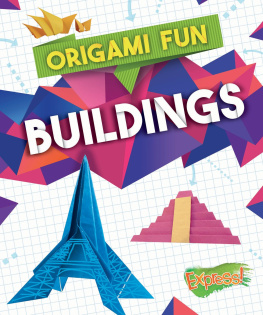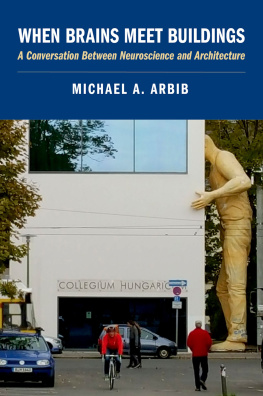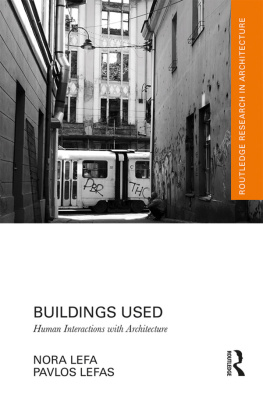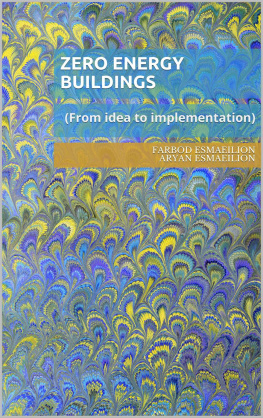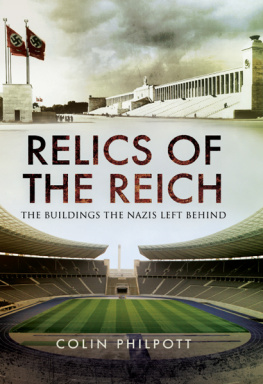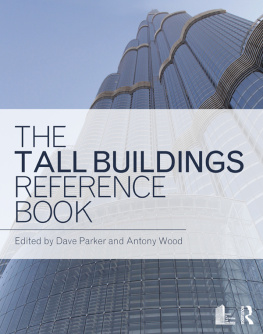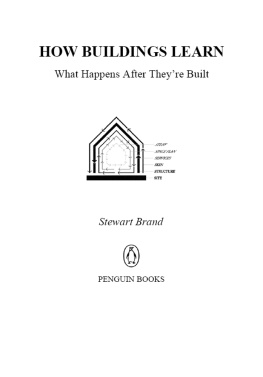PENGUIN BOOKS
HOW BUILDINGS LEARN
Though honored as a writerwith the National Book Award for the Whole Earth Catalog, Eliot Montroll Award for The Media Lab, Golden Gadfly Award for his years as editor of CoEvolution QuarterlyStewart Brand is primarily an inventor/designer. Trained as a biologist and army officer, he was an early multimedia artist. He has created a number of lasting institutions, including New Games Tournaments, the Hackers Conference, and The WELL, a bellwether computer conference system. He is co-founder of Global Business Network, a futurist research organization fostering the art of the long view. Based on this book, a six-part television series called How Buildings Learn was made by the BBC in 1997, with Stewart Brand as writer and presenter.
HOW BUILDINGS LEARN
What Happens After Theyre Built

Stewart Brand

PENGUIN BOOKS
P ENGUIN B OOKS
P UBLISHED BY THE PENGUIN GROUP
P ENGUIN G ROUP (USA) INC. , 375 H UDSON S TREET , N EW Y ORK , N EW Y ORK 10014, U.S.A.
P ENGUIN G ROUP (C ANADA ), 90 E GLINTON A VENUE E AST , S UITE 700, T ORONTO , O NTARIO , C ANADA M4P 2Y3 ( A DIVISION OF P EARSON P ENGUIN C ANADA I NC. )
P ENGUIN B OOKS L TD , 80 S TRAND , L ONDON WC2R 0RL, E NGLAND
P ENGUIN I RELAND , 25 S T S TEPHENS G REEN , D UBLIN 2, I RELAND ( A DIVISION OF P ENGUIN B OOKS L TD )
P ENGUIN G ROUP (A USTRALIA ), 250 C AMBERWELL R OAD , C AMBERWELL , V ICTORIA 3124, A USTRALIA ( A DIVISION OF P EARSON A USTRALIA G ROUP P TY L TD )
P ENGUIN B OOKS I NDIA P VT L TD , 11 C OMMUNITY C ENTRE , P ANCHSHEEL P ARK , N EW D ELHI 110 017, I NDIA
P ENGUIN G ROUP (NZ), 67 A POLLO D RIVE , R OSEDALE , N ORTH S HORE 0632, N EW Z EALAND ( A DIVISION OF P EARSON N EW Z EALAND L TD )
P ENGUIN B OOKS (S OUTH A FRICA ) (P TY ) L TD , 24 S TURDEE A VENUE ,
R OSEBANK , J OHANNESBURG 2196, S OUTH A FRICA
P ENGUIN B OOKS L TD , R EGISTERED O FFICES :
80 S TRAND , L ONDON WC2R 0RL, E NGLAND
F IRST P UBLISHED IN THE U NITED S TATES OF A MERICA BY
V IKING P ENGUIN, A DIVISION OF P ENGUIN B OOKS USA I NC. , 1994
P UBLISHED IN P ENGUIN B OOKS 1995
20 19 18 17 16 15 14 13
C OPYRIGHT S TEWART B RAND , 1994
A LL RIGHTS RESERVED
G RATEFUL ACKNOWLEDGEMENT IS MADE FOR PERMISSION TO REPRINT T HE B ED BY THE W INDOW FROM SelectedPoems BY R OBINSON J EFFERS . C OPYRIGHT 1932 BY R OBINSON J EFFERS . C OPYRIGHT R ENEWED 1960 BY R OBINSON J EFFERS . R EPRINTED BY P ERMISSION OF R ANDOM H OUSE , I NC.
THE LIBRARY OF CONGRESS HAS CATALOGUED THE HARDCOVER AS FOLLOWS : B RAND , S TEWART
H OW B UILDINGS L EARN : W HAT H APPENS A FTER T HEYRE B UILT/BY S TEWART B RAND
P. CM.
I NCLUDES BIBLIOGRAPHICAL REFERENCES AND INDEX .
ISBN: 978-1-101-56264-2
1. A RCHITECTURE H UMAN F ACTORS . 2. B UILDINGS P ERFORMANCE .
3. B UILDINGS U TILIZATION . I. T ITLE .
NA2542.4.B73 1994 93-40193
720.1 DC 20
P RINTED IN THE U NITED S TATES OF A MERICA
S ET IN A DOBE G ARAMOND AND H ELVETICA
D ESIGNED BY S TEWART B RAND AND D ONALD R YAN
E XCEPT IN THE U NITED S TATES OF A MERICA, THIS BOOK IS SOLD SUBJECT TO THE CONDITION THAT IT SHALL NOT, BY WAY OF TRADE OR OTHERWISE, BE LENT, RE-SOLD, HIRED OUT, OR OTHERWISE CIRCULATED WITHOUT THE PUBLISHERS PRIOR CONSENT IN ANY FORM OF BINDING OR COVER OTHER THAN THAT IN WHICH IT IS PUBLISHED AND WITHOUT A SIMILAR CONDITION INCLUDING THIS CONDITION BEING IMPOSED ON THE SUBSEQUENT PURCHASER .
T HE SCANNING, UPLOADING AND DISTRIBUTION OF THIS BOOK VIA THE I NTERNET OR VIA ANY OTHER MEANS WITHOUT THE PERMISSION OF THE PUBLISHER IS ILLEGAL AND PUNISHABLE BY LAW . P LEASE PURCHASE ONLY AUTHORIZED ELECTRONIC EDITIONS, AND DO NOT PARTICIPATE IN OR ENCOURAGE ELECTRONIC PIRACY OF COPYRIGHTED MATERIALS. YOUR SUPPORT OF THE AUTHORS RIGHTS IS APPRECIATED .
C ONTENTS
A CKNOWLEDGMENTS
P ORCHES FILL IN BY STAGES , not all at once, you know. The architect was responding to a talk I gave at a builders conference. The family puts screens on the porch one summer because of the bugs. Then they see they could glass it in and make it part of the house. But its cold, so they add a duct from the furnace and some insulation, and now they realize theyre going to have to beef up the foundation and the roof. It happens that way because they can always visualize the next stage based on whats already there.
I didnt get the architects name. He stands in my mind for all the ghost collaborators on this book that Ive failed to credit properly. Perhaps culture is driven most by just such flea-market ideas in a vast network of uncredited influence. Generic thanks is due to that network.
As for names, Ill begin with the architects, in honor of the abuse their profession catches in this bookmuch of it quoting them, of course. It will be obvious from the text how much I owe to Frank Duffy, UC Berkeley professor and former State Architect of California. He started all this by encouraging me to lead a seminar called How Buildings Learn at the UC Architecture Department in 1988. The students in that course, including many working professionals, were early co-conspirators.
Others starring in the text are John AbramsPete Retondo, Allen Roberts, David Sellars, Edward Shoucair, Richard Tobias, and Susan Shoemaker.
Planners had a hand in this, as usualnotably neotraditional town planners Peter Calthorpe, carpenter and shipwright Peter Bailey, and information-technology consultant David Coggeshall. Even more in the swim of my subject were facilities managers Chuck Charlton (at Stanford University) and Anita Lewis-Antes (at Princeton). My informants on real estate, where the real power is, included Dick York (Sausalito, California), Jonathan Rose (New York), Geoff Woodling (then of Jones Lang Wootton, London), and Nicholas Wakely (of Vail Williams, England).
Building preservationists, time-intoxicated, gave me early encouragement and direction, especially Penny Jones at Chatsworth (Derbyshire), Lloyd Fairbanks at the Fairbanks House (Massachusetts), Director Neil Horstman and librarian Barbara McMillan at Mount Vernon, Director Christopher Scott and researchers Ann Miller and Larry Dermody at Montpelier, Connie Weismuller at Tor House (California), and Liz Robinson at an old shipyard called Marinship.
My greatest research joy was in libraries, swarming through photo collections, reveling in glorious or obscure tomes. Home base was the UC Berkeley Environmental Design Library, ably run by Elizabeth Byrne. The value of its immense collection was multiplied by being computer-searchable from anywhere. Another trove was the Library of CongressAmericas greatest governmental treasurewhere Craig DOoge (public relations) and Ford Peatross (Prints Collection architectural historian) were invaluable. Betty Monkman guided me through the rich photo documentation at The White House. Arthur Olivas in Santa Fe did the same with the Museum of New Mexicos wonderful collection, well represented in this book. In Britain, Stephen Croad and Gordon Smith helped me with the huge photo archive of the Royal Commission on the Historical Monuments of England, London; Jill Lever showed me choice items in the Drawings Library of the Royal Institute of British Architects; and Douglas Matthews was gracious at the London Library.
Boston turned out to be a major resource area, thanks to Rodney Armstrong and Sally Pierce of the Boston Athenaeum, Sally Beddow and later Kara Schneiderman at the MIT Museum, and Lorna Condon at the Society for the Preservation of New England Antiquities. Im grateful also for special assistance from Stan Ritchey at the Historic New Orleans Collection, Al Regensberg at New Mexicos State Records Center and Archives, Robert MacKimmie of the California Historical Society (San Francisco), and Paul Roberts at William Stout Books in San Franciscoa museum-quality architectural bookshop.
Next page


